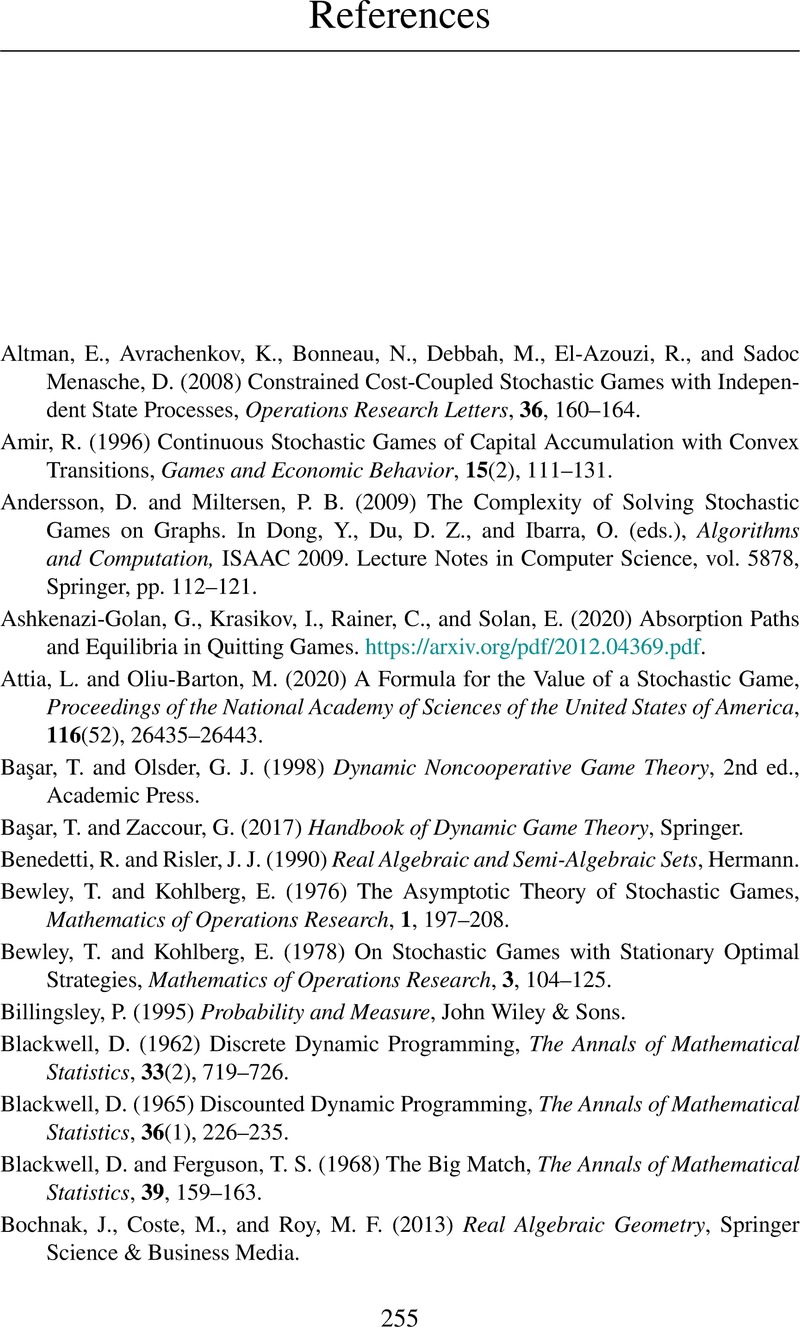Book contents
- Frontmatter
- Dedication
- Contents
- Introduction
- 1 Markov Decision Problems
- 2 A Tauberian Theorem and Uniform ∈-Optimality in Hidden Markov Decision Problems
- 3 Strategic-Form Games: A Review
- 4 Stochastic Games: The Model
- 5 Two-Player Zero-Sum Discounted Games
- 6 Semi-Algebraic Sets and the Limit of the Discounted Value
- 7 B-Graphs and the Continuity of the Limit limλ→0 ʋλ(s;q,r)
- 8 Kakutani’s Fixed-Point Theorem and Multiplayer Discounted Stochastic Games
- 9 Uniform Equilibrium
- 10 The Vanishing Discount Factor Approach and Uniform Equilibrium in Absorbing Games
- 11 Ramsey’s Theorem and Two-Player Deterministic Stopping Games
- 12 Infinite Orbits and Quitting Games
- 13 Linear Complementarity Problems and Quitting Games
- References
- Index
- References
References
Published online by Cambridge University Press: 05 May 2022
- Frontmatter
- Dedication
- Contents
- Introduction
- 1 Markov Decision Problems
- 2 A Tauberian Theorem and Uniform ∈-Optimality in Hidden Markov Decision Problems
- 3 Strategic-Form Games: A Review
- 4 Stochastic Games: The Model
- 5 Two-Player Zero-Sum Discounted Games
- 6 Semi-Algebraic Sets and the Limit of the Discounted Value
- 7 B-Graphs and the Continuity of the Limit limλ→0 ʋλ(s;q,r)
- 8 Kakutani’s Fixed-Point Theorem and Multiplayer Discounted Stochastic Games
- 9 Uniform Equilibrium
- 10 The Vanishing Discount Factor Approach and Uniform Equilibrium in Absorbing Games
- 11 Ramsey’s Theorem and Two-Player Deterministic Stopping Games
- 12 Infinite Orbits and Quitting Games
- 13 Linear Complementarity Problems and Quitting Games
- References
- Index
- References
Summary

Information
- Type
- Chapter
- Information
- A Course in Stochastic Game Theory , pp. 255 - 264Publisher: Cambridge University PressPrint publication year: 2022
